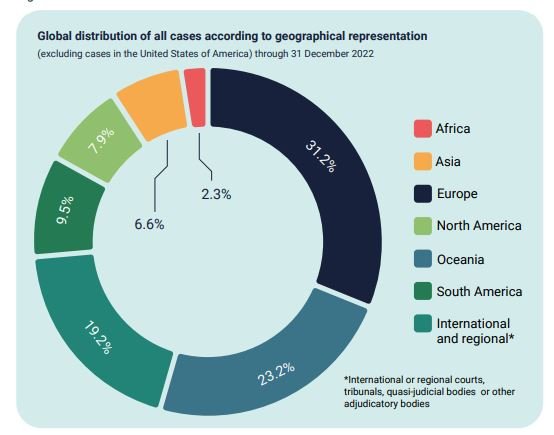The total number of climate change court cases has doubled since 2017 and is growing worldwide. Global Climate Litigation Report 2023 by the UN environment program (UNEP) shows that climate litigation is becoming an integral part of securing climate action and justice.
The climate crisis is getting worse, not better. Every year, the impacts of climate change are getting more intense. Hundreds of millions of people endure increasingly regular extreme weather events every year, taking away livelihoods and lives. Every year, our economies – and in some cases, entire countries – begin to see the reality of an uncertain future.
Triple planetary crises of climate change
“Climate policies are far behind the target to keep global temperatures below the 1.5°C threshold,” said Inger Andersen, UNEP Executive Director. “People are increasingly turning to courts to combat the climate crisis, holding governments and the private sector accountable and making litigation a key mechanism for securing climate action and promoting climate justice.”
The legal grounds for these cases are also widening. Both the United Nations Human Rights Council and the United Nations General Assembly have now
recognized the right to a clean, healthy, and sustainable environment. Climate litigation has set precedents for climate action all over the globe.
This report demonstrates the importance of an environmental rule of law in combating the triple planetary crises of climate change, biodiversity loss, and pollution. The total number of climate change cases has doubled.
The report demonstrates how the voices of vulnerable groups are being heard globally. 34 cases have been brought by and on behalf of children and youth under 25 years old, including by girls as young as seven and nine years of age in Pakistan and India respectively

6 categories of climate litigation
According to the report, most ongoing climate litigation falls into one or more of six categories:
1) cases relying on human rights enshrined in international law and national constitutions
2) challenges to domestic non-enforcement of climate-related laws and policies
3) litigants seeking to keep fossil fuels in the ground
4) advocates for greater climate disclosures and an end to greenwashing
5) claims to address corporate liability and responsibility for climate harms
6) claims addressing failures to adapt to the impacts of climate change.
In the future, the report predicts a rise in the number of cases dealing with climate migration, cases brought by Indigenous peoples, local communities, and other groups disproportionately affected by climate change,









